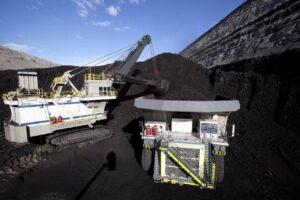The government-owned energy utility Snowy Hydro, stung by the widespread criticism of the taxpayer-funded Kurri Kurri gas generator, says there is room for another five gas generators in Australia’s main grid, and suggests that it will be impossible to achieve 100 per cent renewables in Australia.
Snowy chief financial officer Gordon Wymer also rejected suggestions that the $600 million in government funds for Kurri Kurri amounts to a subsidy, noting that it was an “equity investment” from the government, which will get a “very good” return. “We haven’t lost a dollar on any investment we have made,” he said.
In a spirited and wide-ranging discussion with Alinta CEO Jeff Dimery at a Credit Suisse energy conference, Wymer said the company “bristled” at suggestions the Kurri Kurri gas generator was being built under instructions from the Morrison government,.
“We build these thing because of the demand in our portfolio, not because the government told us to. The energy minister and the finance minister are fans of the project because they have seen the detailed business case, which is extremely extensive.”
That business case has not been publicly released and most independent analysis concludes that it will not be financially viable. See: Kurri Kurri costs could blow out and could run out of gas, energy experts say and “It’s a disgrace:” Snowy Hydro to use government subsidy for market dominance
Wymer said Snowy’s business case was based around the assumption there was little spare capacity in the market, particularly at peak times. Without Kurri Kurri, he said Snowy would be unable to write new contracts, and he said there was room for another five such generators in the main grid.
He said most media discussion on the need for Kurri Kurri focused on what was needed at times of relatively low demand, but at peak times the potential shortfall from Liddell was around 1.3GW. “For some reason that is not reported,” Wymer said.
“We get a bit antsy about the government subsidy thing,” he added, although he also conceded that EnergyAustralia’s proposed Tallawarra gas-fired power station was only possible with a government grant. “It had to be subsidised to get across the line,” Wymer said.
Alinta’s Dimery agreed it would be impossible for the private sector to build a similar plant.
“We can’t economically develop any sort of peaking gas fired project without having some form of government support,” Dimery said.
“And I think that ‘s indicative of all private players. The only new investments that have been made in the market are investment that are being underwritten by government in some way, shape or form, either on the financing side or otherwise.”
Alinta owns the Loy Yang B brown coal power plant in Victoria and Dimery said it intends to run it “till the end of its useful life”, which is 2047. Dimery said the “final 100 yards” of carbon reductions in the grid would have to be found in other parts of the economy.
See the discussion about proposed capacity markets and the response to the Energy Security Board’s market review here: Industry slams Taylor’s favoured coal subsidy in response to ESB market options
Snowy’s Wymer agreed that some coal would continue, even though he said it was clear that wind and solar in Australia were not only abundant, but incredibly cheap. But he did not believe that 100 per cent renewables would be possible.
“It is inconceivable to us that the grid can be 100 per cent renewable at any kind of reasonable cost. So we don’t see that, ever,” Wymer said. (Snowy is not a fan of battery storage).
“We could be wrong, and other people have modelled it and they say if you stack up so much wind and so much solar you get so much redundancy … and we add megawatts of storage that it could work.
“We don’t see that picture. So we focus on how do you get the most competitive price outcome for consumers … and that has baseload coal out till 2040, which is the end of our analysis period. Simply because the amount of dispatchable capacity has to have a base.”










